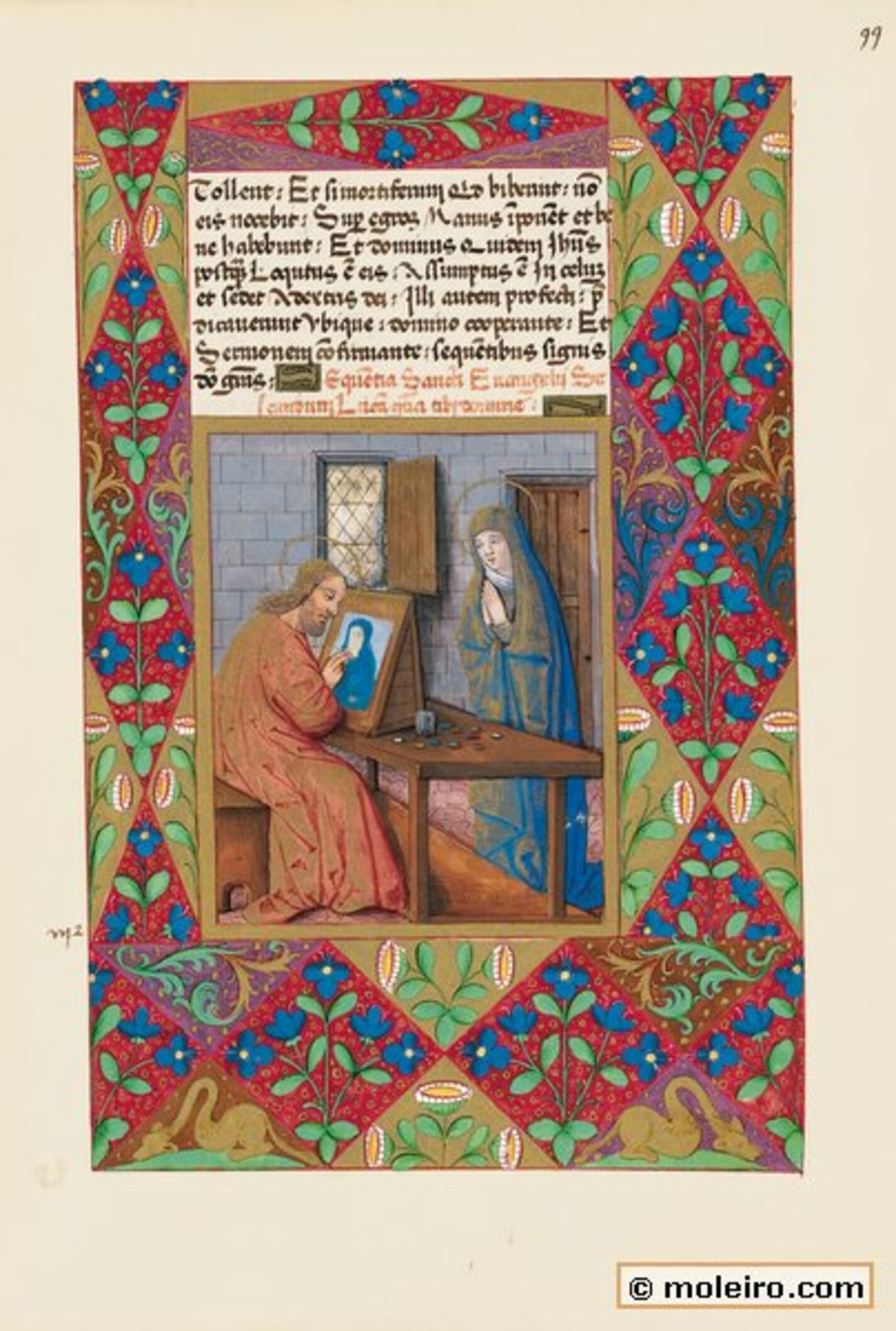The text above the miniature relates the end of the passage of St Mark’s Gospel. St Luke’s Gospel (1: 26-38) begins on the next folio. Unlike previous portraits, St Luke is portrayed not as a poet but as a painter sitting – rather unconvincingly – on a wooden bench painting a bust portrait of the Virgin Mary on a panel placed on a stand. He holds a very fine paintbrush held – also in an unconvincing manner that conveys the scant knowledge of anatomy of some of Jean Colombe’s collaborators – between his index and middle fingers. There are several receptacles with paints and paintbrushes and a glass tumbler on the table. Our Lady, with a halo and wearing a headdress and her blue cloak, stands in front of a wooden door with her hands joined. Light enters the room through an open window. In this representation, again unlike earlier ones, the animal symbolising the Evangelist is missing. Thecomposition – almost an atelier pattern – is similar, although inferior in quality, to one appearing in several books of hours, such as that of Louis of Laval (Paris, Bibliothèque nationale de France, ms. lat. 920, f. 32v); one housed in Florence(Biblioteca Laurenziana, ms. Pal. Med. 241, f. 20r) and another dated 1480 (Paris, Bibliothèque nationale de France, ms. lat. 1160, f. 3r).
The legend identifying him as the painter of the Virgin Mary dates back no further than the 6th century. In L. Réau’s opinion, the representation of the Evangelist as an artist is possibly due to two reasons: firstly because his Gospel is the one with the most details about the life of Our Lady; and secondly, because, according to the French researcher, since the portraits attributed to St Luke date from a much later period, there has been some confusion with a nine-century Florentine painter called Luca, nicknamed il santo because he was so pious. When memories of him faded, this santo Luca was thought to be the Evangelist. However, the much older origins of this legend are still obscure. There are many different versions of St Luke as a painter: seated or kneeling before the Virgin Mary, who is either alone or with the Child. Sometimes he is drawing with a pencil or a silver burin, or painting with a brush, sometimes an angel inspires him and guides his hand, and sometimes even an ox is present. The subject was especially common among Flemish masters in the 15th and 16th centuries.
